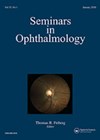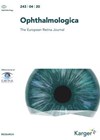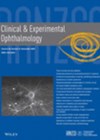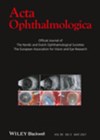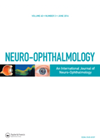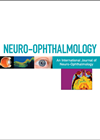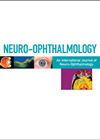
Journal Reviews
The effects of anti-VEGF therapy for NvAMD on retinal vasculature
This retrospective consecutive case series examined 54 eyes of 54 treatment-naïve neovascular age-related macular degeneration (N-AMD) patients. Thirty-three eyes received intravitreal aflibercept injections, and 21 eyes received intravitreal ranibizumab injections with unaffected fellow eyes (54 eyes) as controls. All image...
OCTA in geographic atrophy
In this article the authors aim to give an overview of the current literature concerning the application of OCT-A in geographic atrophy (GA). GA is a disease characterised by loss of outer retinal layers including photoreceptors, degeneration of the retinal...
Microdroplet and splatter contamination during phacoemulsification in COVID-19 era
Half a millilitre of fluorescein was incorporated into 400ml of balanced salt solution to identify microdroplet and splatter from phacoemulsification to simulate possible COVID-19 contamination. Five porcine eyes were mounted to an ophthalmic mannequin head and two surgeons (height 189cm,...
Wet AMD outcomes post cataract surgery
The authors present the findings of a retrospective study looking at the progression of wet age-related macular degeneration (AMD) in patients who underwent cataract surgery. They recruited a series of 111 patients of which 38 were men and 73 were...
Characteristics of Charles Bonnet syndrome in patients with neovascular AMD
This retrospective cross-sectional study aimed to characterise various aspects of Charles Bonnet syndrome hallucinations among patients with neovascular age-related macular degeneration (AMD). Five hundred and ten consecutive patients were asked a screening question to determine if they had ever suffered...
Changes in drusen and retinal layer volumes prior to CNV development
This retrospective longitudinal study looked at patients with wet age-related macular degeneration (AMD) in one eye who subsequently developed wet AMD in the fellow eye. The aim was to discover whether drusen characteristics or volumes of retinal layers correlate with...
Aberrant regeneration rates following traumatic oculomotor palsy
Traumatic oculomotor nerve palsies can result in aberrant regeneration / synkinesis which impairs normal facial function. In this paper, the authors retrospectively reviewed the records of 16 patients with traumatic oculomotor nerve palsies who were treated with or without steroids....
Using a pupillometer to confirm presence of RAPD in post stroke homonymous hemianopia
It has been reported that relative afferent pupillary defects (RAPDs) may be present in patients with occipital lobe lesions. However, a small contralateral RAPD due to a difference in the crossed and uncrossed fibres can be difficult to detect using...
Systematic review on vergence neural pathways
A full systematic review of the literature was carried out by the authors, to identify literature available on vergence neural pathways and associated disorders. The review included articles related to vergence neural pathways, along with articles that discussed the anatomy,...
A case series of acquired esotropia in cerebellar disease
Acquired esotropia in cerebellar disease is well described but under-recognised. The pathogenesis of cerebellar esotropia is controversial. It is suggested it may be a result of disruption to central vestibular pathways. This article reports a case series of seven adults...
Abducens nerve palsy following surgical correction of craniosynostosis
The authors present two cases of unilateral abducens palsy secondary to a recent trans-sutural distraction osteogenesis (TSuDO) operation for craniosynostosis. The basic principle of the TSuDO procedure is described as dissection and distraction of the prematurely fused sutures. This complication...

